So you are researching your head off, reading every article you can find on the real story about ICF construction. How it is, living in one, building one or owning an ICF structure. You even sign up to all the blogs you can find, the social media pros, DIY folks. Don’t forget the emails to the various forms manufacture’s, sales teams and dark web holes learning about a range of ideas from hay bail houses, 3D printed concrete houses, embodied energy, off gassing and the like. Why there are over 50 different ICF systems and what’s the difference? Why so many varying cost analysis out there?
After all of that research, if you still don’t have a grasp of the why’s and over-costs, I’d be willing to bet you are on the verge of giving up and giving in to typical methods right?
Well it’s good that you are here. As an ICF contractor for over 16 years now, I will try help shed some light on the principle values of using ICF. I cannot speak to the other methods listed above because I do not provide those services so I wall stay in my ICF lane here.
First let’s talk about the various ICF forms and the differences.
Most ICF forms share the same qualities and will perform in the same manner. The differences in the forms become more preferences to someone like an installer who works with the forms over and over, or perhaps availability to your region shipping costs are better.
The BIG 3

Full Open tabs
- Full OPEN Tabs or webs On 6″ or 8″ Centers– forms with 6″ on center tabs, (the plastic magic piece that holds the forms together and gives us attachment points hidden under the face of the forms inside and out) tout a tiny savings in waste over other manufacturers who spread their tabs to 8″ centers. The OPEN reference is not so much a thing anymore and most manufactures have taken up the concept that less stuff in the way of concrete is a good thing. You would need to decide whether having a few less tabs in a form matters to you or not. I can speak to the fact that in most all 8″ on center forms, I personally cannot tell if they are less strong when pouring concrete as we have used both styles over the years with ZERO issues. Some argue they are, some they are not. Mostly the arguments come once again from the guys in the field and are personal preferences. If the install is good, the concrete is correct, you should not have any issues with either based on the centering.

Not so open tabs w shorter legs
2. Fully Reversible Forms– This was a big deal some years back but like the full open tab, reversibility has now been assimilated by nearly all manufacturers. Why it’s a good thing. Let’s say you are building to a 10′ wall height. If you stack 7 courses above the slab you would be @ 9′-4″. If you add another course you would be at 10′-8″ So now let’s use the ability to cut a form in half horizontally and use the other half over 7 courses high ( which puts you at 10′ ) Whala! You have saved some money. There are other ways to use the 8″ reversible feature as well. It’s pretty cool.
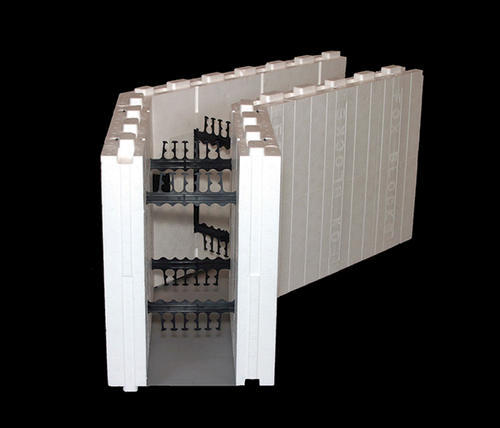
Full reversible, Full open webs
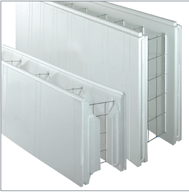
Old School, non- reversible forms on 12″ and 6″ spacing
3. The Full Monty-An arsenal of molded corners, 45 degree forms, brick ledge and taper top offerings to mention a few. Larger corners are the new cat’s meow. The bigger corners of BuildBlock, Fox Blocks and Amvic’s 3.30 forms are more stable than older designs and preferred by installers hands down for less work in bracing and scabbing. Some ICF makers have knockdown forms in that the tabs can hinge for folding or the tabs can be installed in the field enabling much more product in the truck. These offer advantages over formed ICF forms in shipping and some are much larger square footage per form than the standard straight form which is 5.33 sq ft. Nudura for example touts an 8 sq. ft. foldable or hinged straight form. When is this advantageous for you? If your project needs multiple truckloads, this might be something to look in to. If your project is large, setting 8 sq. ft. vs 5.33 sq. ft. per straight form is an advantage in terms of speed. Some manufacturers even have forms with thicker foam on one side, no foam on one side for that industrial look or an elevator shaft where code demands bare concrete. As you can see there are plenty of options.
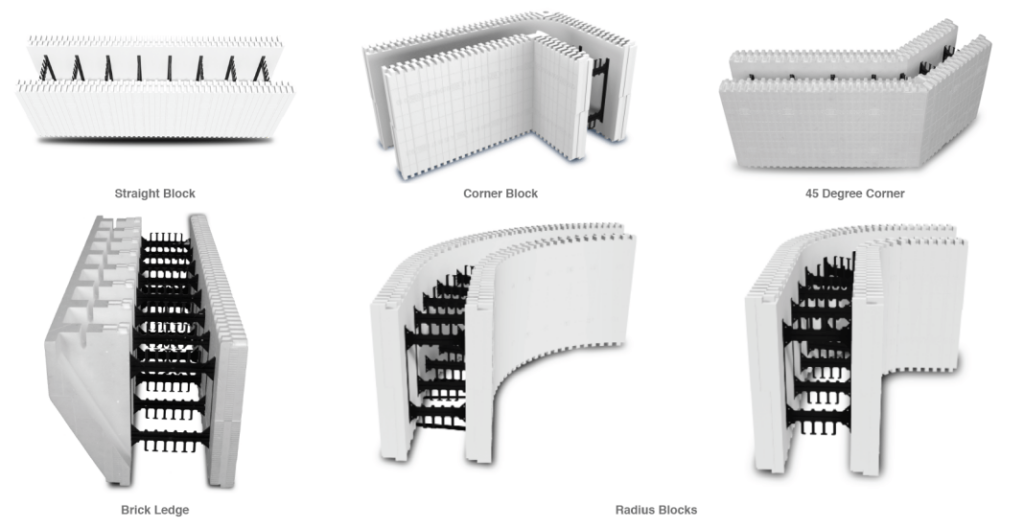
Height And Spacing
Most ICF forms are 16″ tall. The tabs inside the form allow for horizontal rebar placement to easily be on 16″ centers when adding a bar to the top of the tab rebar holders in each course. If you get yourself in a situation where rebar is being specified for a different spacing, you could shop for a different form height which would make your internal spacing different. Amvic has a 2′ tall form in the big voids of 10″ and 12″ and Quad Lock forms are 12″ tall with gives you 12″ On center spacing horizontally. As an example.
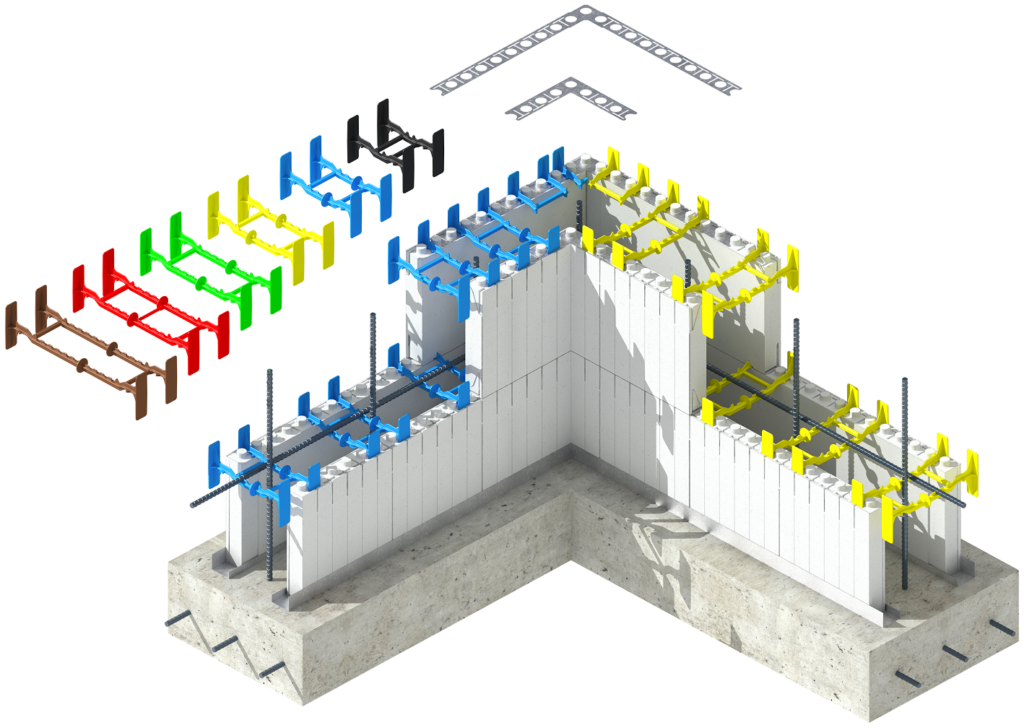
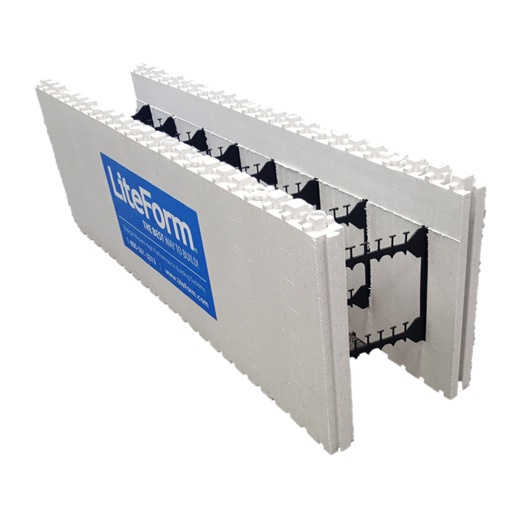
The Money
The reason you are doing this in the first place is for one or all the the following I hope:
I live in a rough neighborhood, the bullets fly, I want to reduce my target foot print.
I want a super strong structure. Tornado’s and hurricane’s are my constant companion.
I want to have a net zero home. Reduce my Carbon footprint , sell back power to the grid.
I want the peace and quiet ICF offers.
I have super bad allergies and I hear that involuntary air transfer is reduced by a lot!
I live in a fire prone region and I do not want to watch my home burn..ever..again!
Termites ate my last house….I’m pissed!
Walls Matter:
ICF costs more than wood. So let’s just get that out there. You are also getting so much more that 2×4 or 2×6 or 2×8 or 2x whatever construction. It’s called solid, rebar reinforced, solid concrete walls with 5-6″ of 1.5 lb. density, expanded polystyrene foam. Nothing compares to that!
So how much more?
Our clients see the ROI of their green investments in as little as 5-6 years. From there, they are in the tall cotton.
You should expect these investments to cost somewhere in the 16 to 21% of total cost of project area. There are other numbers out there. This is for a combination of ICF, Geo thermal, SIP panels or expanded foam, good windows, cats and dogs..living together and such. ( This number was calculated by one of my home owners a few years ago, I’m sure there needs to be some wiggle room here, not too terribly off this I’ll bet.)
ICF investments need some other sensible investments also to maximize it’s effectiveness. ICF want’s compatible roof R values. Semi conditioned spaces,
Roofs MATTER!
Flat roof designs, insulated concrete roofs and the like. The simple wood transfer from ICF simply needs some expanded foam matching RV in the roof line or you can throw a bunch of cellulose over the ceilings. ( which will not give you a semi conditioned space up there ) But cellulose over ceiling is the cheapest way to get the job done.
Windows MATTER!– Windows equals hole in wall. Hole in wall equals weakness. Fill the hole with the best window you can find.
With these other contributors you should see a massive 50-70% reduction in consumption. Why? Because you are not buying so much HVAC for one thing. If you did match the HVAC tonnage with a comparable wood home, you would soon be in the mold growing business. Not a great market for mold yet so let’s not. The air in your house does not have the ability to change as often. This is involuntary air exchange. If this does not happen through walls then where? Doors and windows, cracks and crevices. The new tighter, green homes sometime need air exchangers in lew of tonnage. To bring fresh air in. Sometimes the mechanical money is a wash but the end result is still the same. Savings over time.
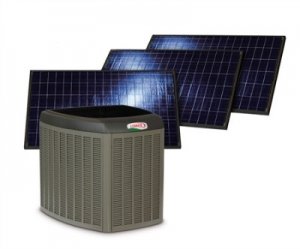
Imagine what would happen if we added Tesla’s Power Wall and some solar panels? And perhaps an HVAC system that is such a high SEER dogs can only hear it. Top it all of with the system being powered by Solar? or Geothermal, or radiant heating?


You are conserving AND making enough power to be possibly net zero. Now you see. It’s your home, the environment, and you can contibute.
The questions becomes..Why would I NOT build with these new technologies? It’s the money you spend now, and the savings after, that fuels the passion and benefits over yours, and quite possibly, your kids, kids, kids lifetimes. (Drop the mic)

